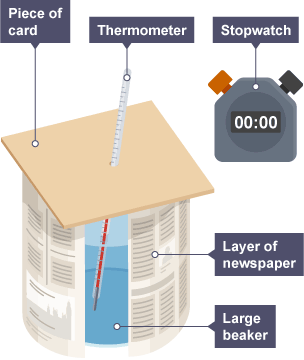thermal insulators
1/6
Earn XP
Description and Tags
Insulating a hot object reduces the rate of heat loss to the surroundings. In this practical lesson, you will insulate a container using an insulating material and record the temperature over time. You will then vary the number of insulation layers to determine the relationship between insulation thickness and energy transfer.
Name | Mastery | Learn | Test | Matching | Spaced |
|---|
No study sessions yet.
7 Terms
aim
investigate how insulation thickness effects the rate of heat transfer
independent variable
number of layers of insulating material
dependent variable
temperature change of water
control variables
amount of water in each beaker (using a measuring cylinder)
initial temperature of water in each beaker
equipment
thermometer
stop clock
beaker
kettle
range of insulating materials
setup
wrap beaker with insulating material
add card on top to prevent heat loss
thermometer through card

steps
pour water into the beaker
wait for recording on thermometer to stop rising, start stopwatch
record initial temperature
leave to cool (5 minutes)
record the final temperature
calculate temperature change
repeat for different insulation layers